Samoa is a beautiful Pacific Island nation, home to a variety of exotic bird species. From the vibrant red-footed booby to the majestic white-tailed tropicbird, Samoa’s birds are a sight to behold.
With its lush tropical forests, tropical grasslands, and coral reefs, this island paradise provides a stunning backdrop for some of the most spectacular birds in the world. For anyone interested in avian life, Samoa is the ideal destination to observe and learn about the incredible diversity of bird species that call this land home.
1. Blue-Crowned Lorikeet
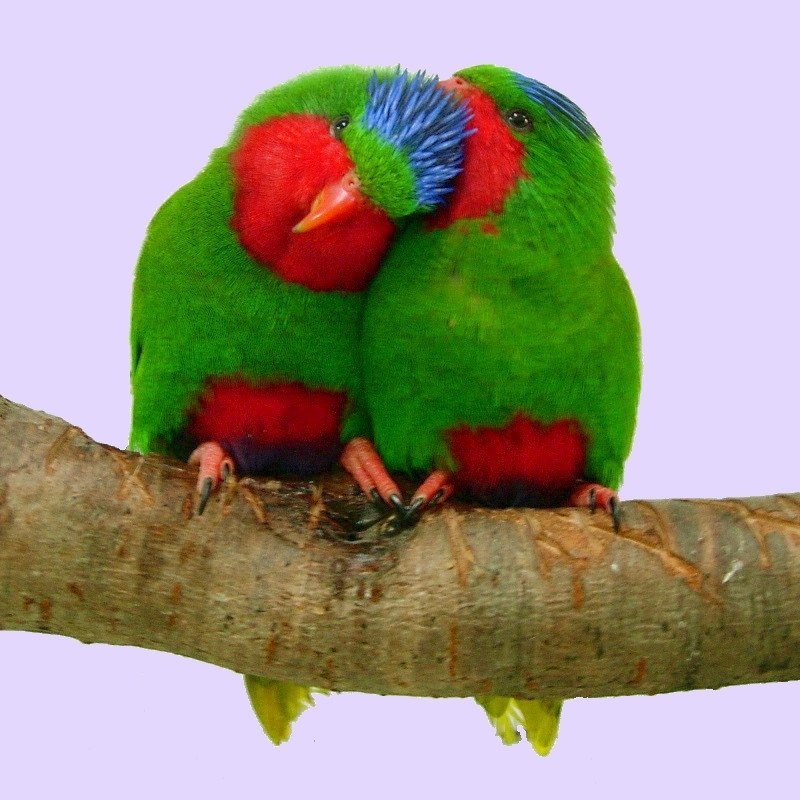
The blue-crowned lorikeet is a stunningly colorful bird native to the South Pacific region. It has bright green wings and an emerald back, with beautiful yellow accents on its neck, chest and belly.
Its most distinctive feature is its brilliant royal blue crown of feathers that extends from its head down onto the top of its beak.
This species can be found in Fiji, Tonga, Samoa, Niue and surrounding islands such as ʻAlofi , Fotuhaʻa etc.
The diet for this parrot consists mainly of nectar from flowers or fruits such as mangoes or bananas – making it one of the few birds which are able to feed directly off plants.
Blue crowned lorikeets are also known for their playful nature; they often flock together in groups while playing games among themselves like chasing each other around branches or flying up high into trees before swooping back down again.Scientific classification:
| Kingdom | Animalia |
| Phylum | Chordata |
| Class | Aves |
| Order | Psittaciformes |
| Family | Psittaculidae |
| Genus | Vini |
| Species | V. australis |
2. Polynesian Starling
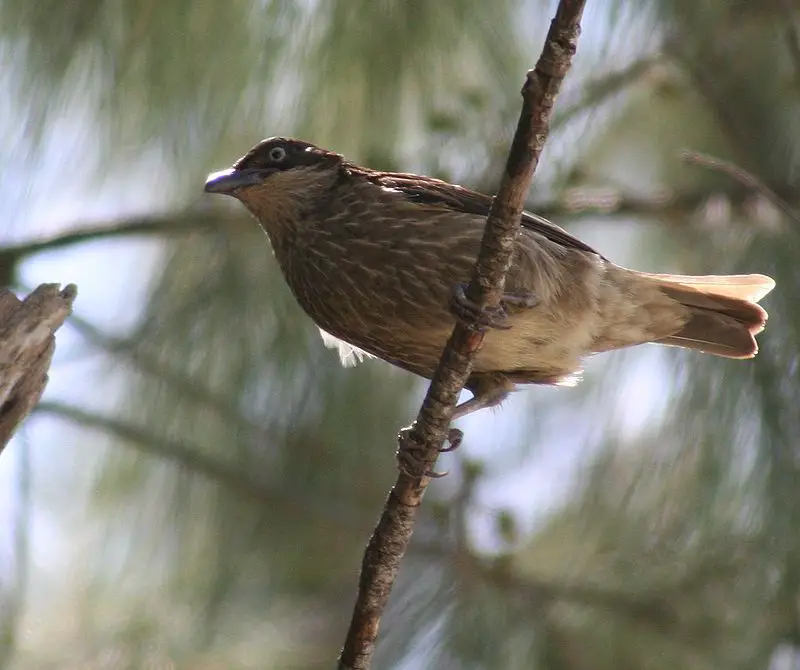
The Polynesian starling is a species of bird from the family Sturnidae. It is found in several places in Oceania, such as Samoa, Fiji, Niue and Tonga. Its habitats are subtropical or tropical dry forests and moist forests.
It varies in appearance depending on its location with some subspecies being darker colored than others.
This starling has a distinct call which can be described as raspy yet melodic at times.
Despite its wide range across the Pacific Islands it continues to face threats from human activities such as deforestation and agricultural conversion of land into plantations for crops like sugarcane that reduce their natural habitat .
Conservationists have called for increased protection efforts to ensure this beautiful species survives into future generations.Scientific classification:
| Kingdom | Animalia |
| Phylum | Chordata |
| Class | Aves |
| Order | Passeriformes |
| Family | Sturnidae |
| Genus | Aplonis |
| Species | A. tabuensis |
3. Mao
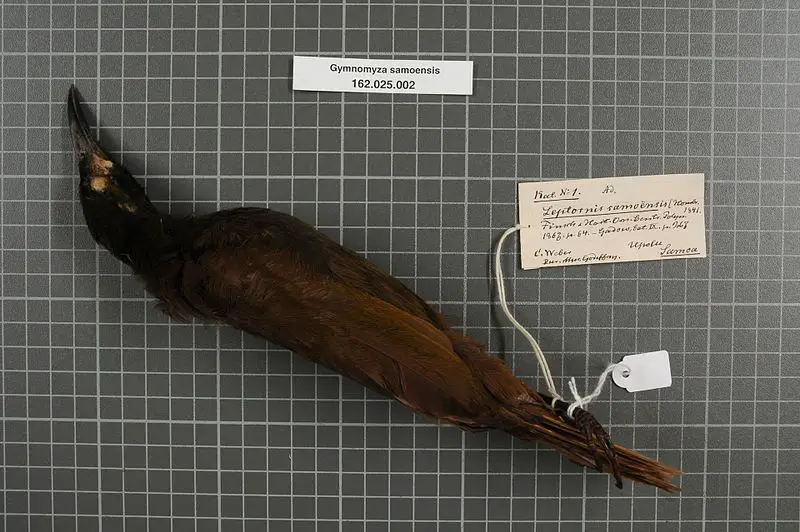
The Mao bird is a beautiful passerine belonging to the genus Gymnomyza in the honeyeater family Meliphagidae.
Its plumage consists of dark colors, ranging from blackish on its head and breast to an olive-green color found on its wings and body.
It has a unique greenish mark under each eye which adds more beauty to this species. Endemic only to Samoa Islands, it measures 28–31 cm (11–12 inches) long making it quite large compared to other Honeyeaters of similar size.
Sadly enough, due mainly human activities such as habitat destruction, hunting and introduction of non-native predators;the Mao Bird is categorized as endangered by IUCN Red List since 1994 and conservation efforts are needed now more than ever before in order for them not go extinct.Scientific classification:
| Kingdom | Animalia |
| Phylum | Chordata |
| Class | Aves |
| Order | Passeriformes |
| Family | Meliphagidae |
| Genus | Gymnomyza |
| Species | G. samoensis |
4. Tooth-Billed Pigeon
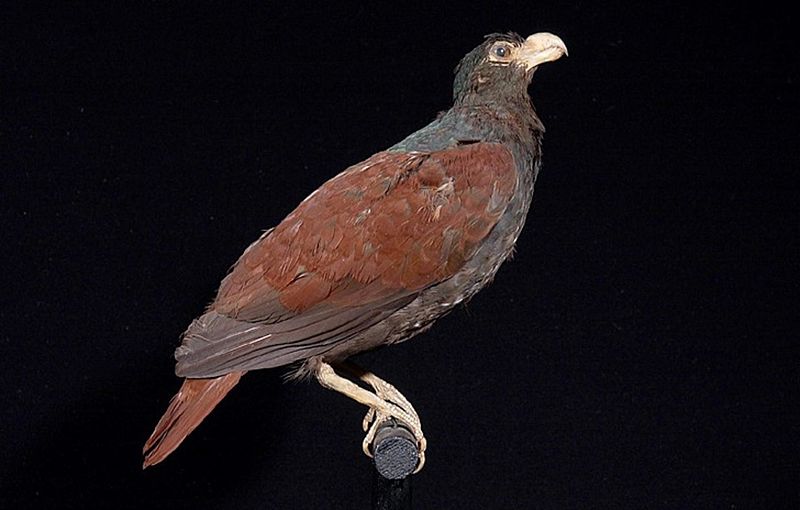
The Tooth-billed pigeon, also known as the manumea, is a large and beautiful bird that can only be found in Samoa. It’s an impressive species as it is the only living one of its genus – Didunculus.
The Tongan tooth-billed pigeon has been extinct for some time now; however traces have been found at various archeological sites in Tonga. This magnificent creature is even considered to be the national bird of Samoa.
Notable features include its bright red eyes and small ‘tooth’ like bill which gives this incredible species its name.
Its feathers are usually brown with areas of grey or white on them too, making it aesthetically pleasing to look upon when seen soaring through Samoan skies.Scientific classification:
| Kingdom | Animalia |
| Phylum | Chordata |
| Class | Aves |
| Order | Columbiformes |
| Family | Columbidae |
| Genus | Didunculus |
| Species | D. strigirostris |
5. White-Rumped Swiftlet
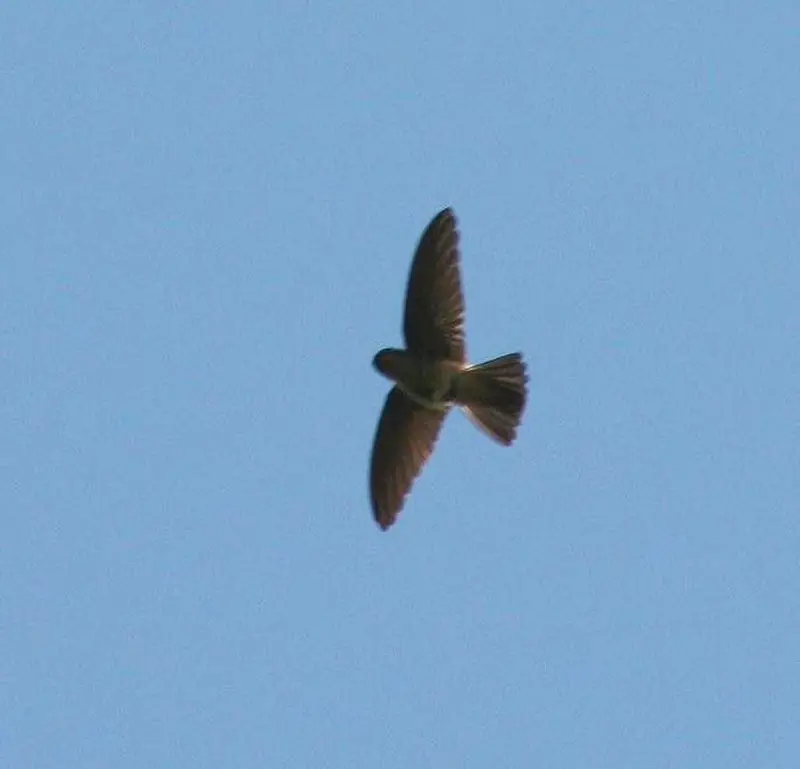
The White-rumped Swiftlet is a species of swift found in the Pacific Islands, including American Samoa, Fiji, New Caledonia and Vanuatu.
It has also been seen in Papua New Guinea and Solomon Islands.
This bird inhabits subtropical or tropical moist lowland forests where it feeds on flying insects such as termites, beetles and flies.
Its main predators are hawks while other threats include deforestation due to logging activities which may reduce its habitat size significantly.
The Australian population was considered separate species (Aerodramus terraereginae) until recently when researchers recognized them as one single species again.
Conservation efforts for this beautiful bird must be done if we want future generations to witness its gracefulness taking flight across our skies.Scientific classification:
| Kingdom | Animalia |
| Phylum | Chordata |
| Class | Aves |
| Order | Apodiformes |
| Family | Apodidae |
| Genus | Aerodramus |
| Species | A. spodiopygius |
6. Many-Colored Fruit Dove
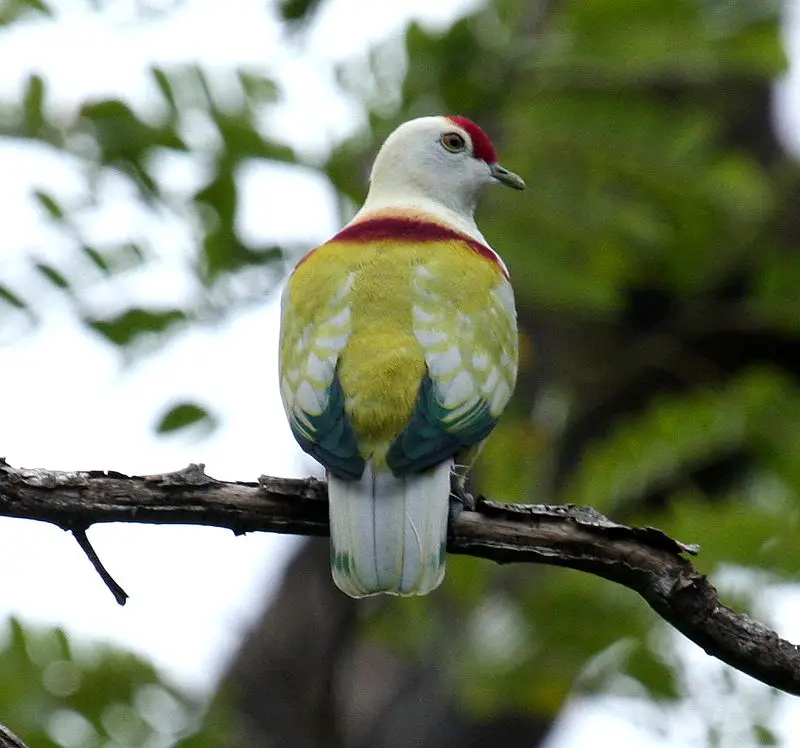
The many-colored fruit dove, also known as the manuma in Samoan language, is a species of bird belonging to the family Columbidae.
It inhabits subtropical or tropical moist lowland forests on islands in Fiji, Samoa and Tonga.
The birds are usually spotted foraging for food among trees during the day but nest at night.
They feed mainly on fruits from various tree species with some insects supplementing their diet occasionally.
These beautiful doves have brightly coloured feathers ranging from white to yellowish green depending upon its age and gender; they make attractive pets when tamed correctly.
With proper conservation efforts we can ensure these stunning creatures remain part of our environment for years to come.Scientific classification:
| Kingdom | Animalia |
| Phylum | Chordata |
| Class | Aves |
| Order | Columbiformes |
| Family | Columbidae |
| Genus | Ptilinopus |
| Species | P. perousii |
7. Samoan Starling
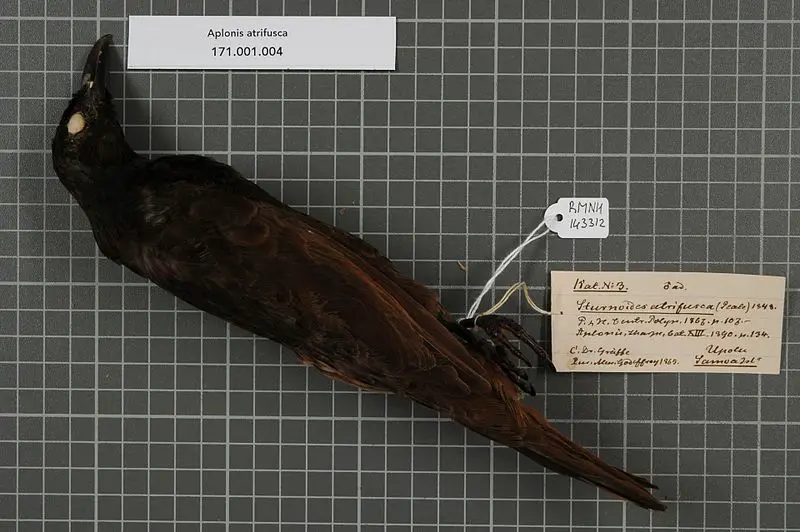
The Samoan starling is a glossy, dark brown bird with a long bill and belongs to the Sturnidae family. It can be found in tropical moist forest on volcanic islands around the Samoan Islands.
These birds are more common than Polynesian starlings which have similar habitats; they produce various whistles and calls throughout the day.
They mainly feed on insects but will also eat fruit for sustenance during their migratory season from October to April when food sources may become scarce.
The nest of these birds is usually made up of twigs woven together in trees or other foliage nearby depending on availability.
Their conservation status has been listed as Least Concern due to its large population range across multiple islands making them likely not vulnerable to extinction anytime soon.Scientific classification:
| Kingdom | Animalia |
| Phylum | Chordata |
| Class | Aves |
| Order | Passeriformes |
| Family | Sturnidae |
| Genus | Aplonis |
| Species | A. atrifusca |
8. Island Thrush
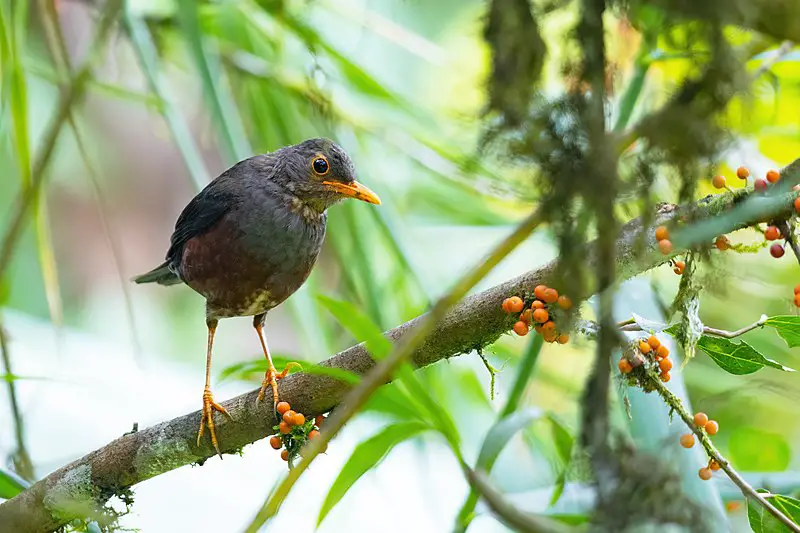
The Island Thrush is a common songbird found in forests throughout Southeast Asia, Melanesia, and Samoa. With nearly 50 subspecies, this species shows great variation in plumage colouration.
Unfortunately, some of these are now threatened or even extinct due to habitat destruction and other human activities.
This bird belongs to the genus Turdus (Linnaeus 1758), which includes many cosmopolitan avian species around the world.
The Island Thrush has strong legs with long toes that allow it to climb easily on branches while searching for food such as insects and fruits. Its loud melodious songs add charm to its natural environment.Scientific classification:
| Kingdom | Animalia |
| Phylum | Chordata |
| Class | Aves |
| Order | Passeriformes |
| Family | Turdidae |
| Genus | Turdus |
| Species | T. poliocephalus |
9. Polynesian Wattled Honeyeater
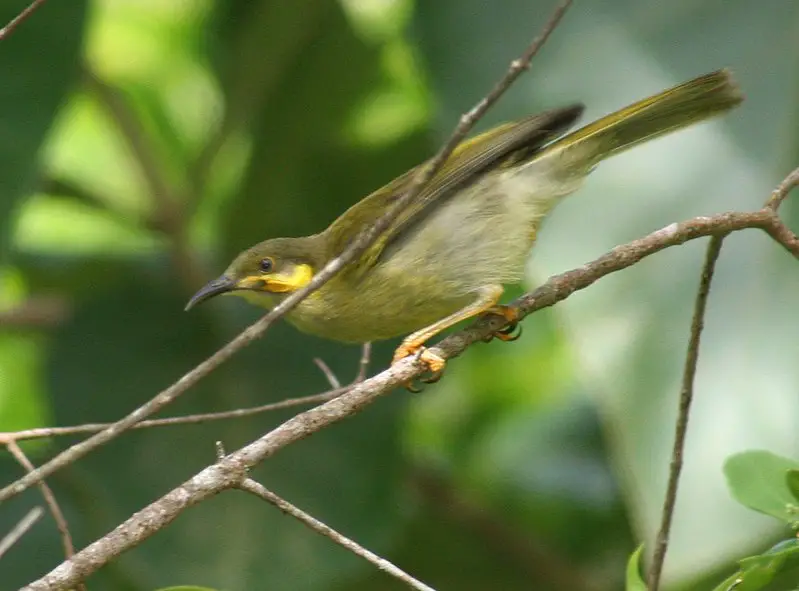
The Polynesian wattled honeyeater is a species of bird in the Meliphagidae family and can be found on American Samoa, Fiji, Samoa, Tonga and Wallis & Futuna Islands.
It was previously thought to be part of the same group as other wattled honeyeaters such as Fijian Wattles Honey Eater or Kikau but it has since been identified that they are all separate species.
They have small bills, stocky bodies with brown plumage on their back while greyish-white below along with yellow eyes.
In terms of habitat these birds prefer open forests, coconut plantations or mangroves which consist mainly of nectar-bearing flowers for them to feed upon.
They usually build their nests in dense foliage near water sources like streams or rivers making them hard to spot by potential predators due to its camouflage capabilities.
All in all this unique little creature is an important member within the Pacific Island avifauna providing us with a glimpse into our past ecology and natural beauty.Scientific classification:
| Kingdom | Animalia |
| Phylum | Chordata |
| Class | Aves |
| Order | Passeriformes |
| Family | Meliphagidae |
| Genus | Foulehaio |
| Species | F. carunculatus |
10. Samoan Flycatcher
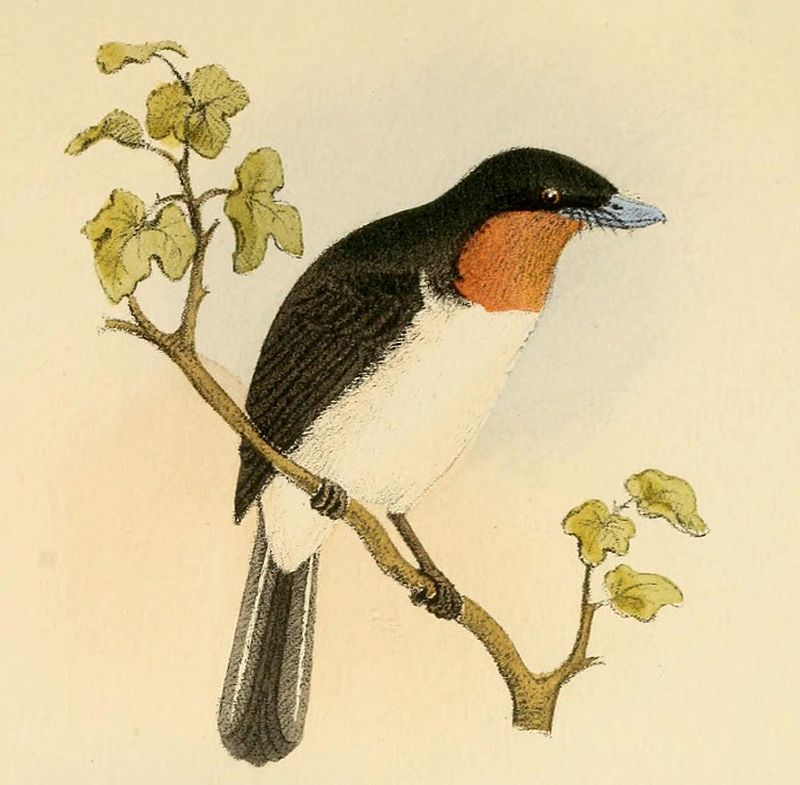
The Samoan flycatcher is a species of bird in the family Monarchidae, found only on the island of Samoa. It inhabits subtropical and tropical moist lowland forests as well as montane forests, rural gardens, and other areas with dense vegetation.
The Samoan Flycatcher has striking white plumage covering its back while its underside sports an elegant grey coloration.
This species is threatened by habitat loss due to human activity such as deforestation or urbanization which take away their natural habitats.
Also known as the Samoan broadbill, this bird was originally described within the genus Platyrhynchus before being reclassified into Myiagra albiventris – making it one of a kind.Scientific classification:
| Kingdom | Animalia |
| Phylum | Chordata |
| Class | Aves |
| Order | Passeriformes |
| Family | Monarchidae |
| Genus | Myiagra |
| Species | M. albiventris |
11. Samoan Fantail
The Samoan Fantail is a small bird native to Samoa. It has an unmistakable silhouette, with its long tail streaming behind it as it flies.
The head and upper body are brown in colour while the underparts are white or pale greyish-brown.
Its distinctive black banded tail feathers provide both camouflage and beautiful decoration when they fan out during flights.
They feed mainly on insects but also take fruits and nectar from flowers of trees such as coconut palms, mangoes and guavas that make up their natural habitat in rainforests of Samoa’s islands.
These birds can be heard singing their sweet song throughout the day which consists of warbling notes repeated at regular intervals.
Their behaviour is usually solitary although sometimes they form larger flocks especially during periods when food is scarce or plentiful after rains come down heavily on the island’s forests providing plenty insect larvae for them to eat.
12. Pacific Imperial Pigeon
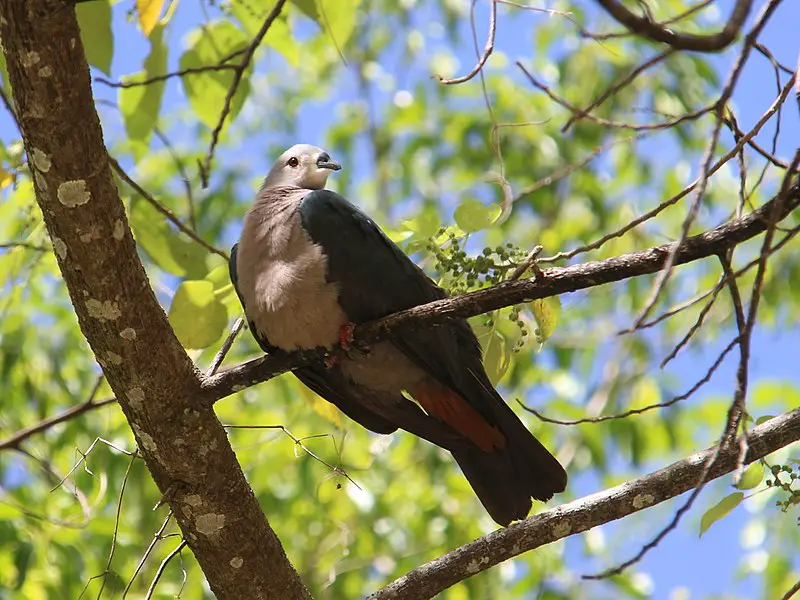
The Pacific imperial pigeon is a beautiful species of bird found in many islands located throughout the South Pacific. It has an iridescent green body, white neck and head with black markings around its eyes and beak.
Its wings are reddish-brown with a large area of blue on each side near the tips. This majestic creature was formally described by Johann Friedrich Gmelin in 1788 and it can grow up to 11 inches long with a wingspan reaching 33 inches wide.
The diet of this amazing avian consists mainly of fruits like figs, mangos, breadfruit, guavas as well as seeds which they search for while flying low over forests or woodlands.
As one can imagine these birds have become very important culturally to many people living within their range due to their beauty and stunning colors.Scientific classification:
| Kingdom | Animalia |
| Phylum | Chordata |
| Class | Aves |
| Order | Columbiformes |
| Family | Columbidae |
| Genus | Ducula |
| Species | D. pacifica |
13. Samoan Whistler
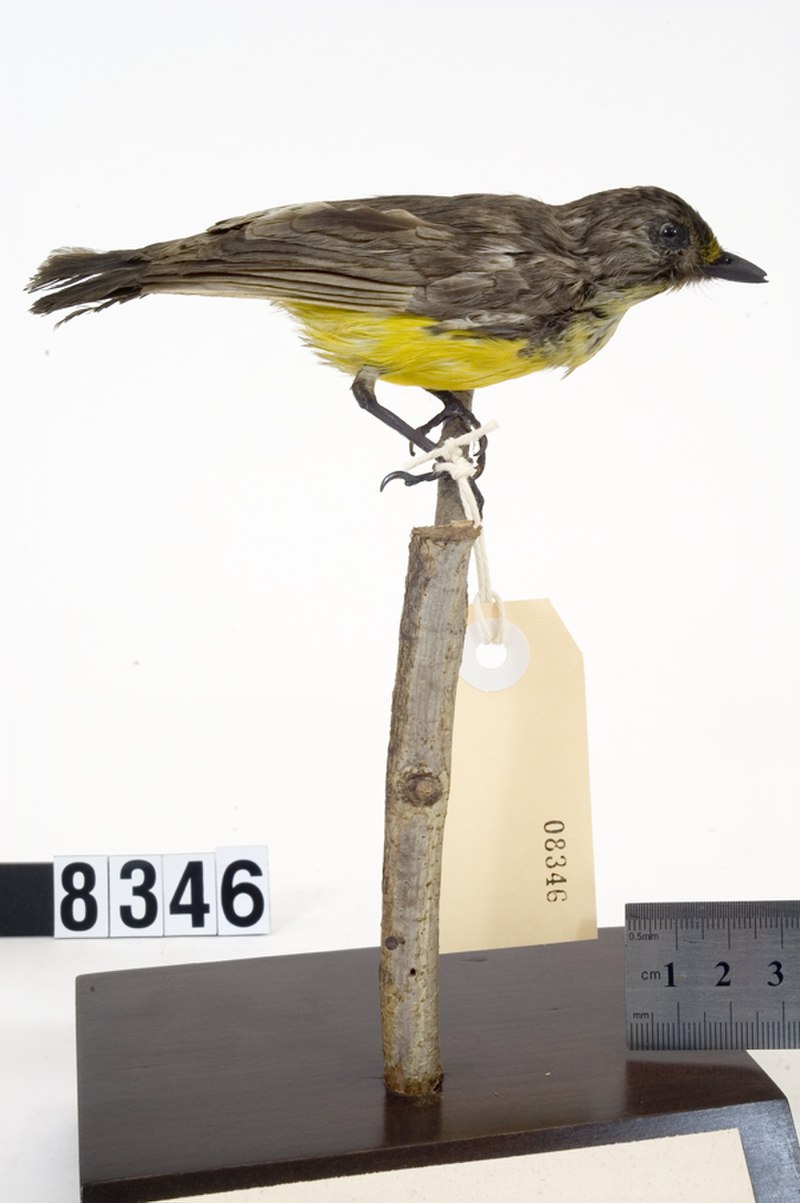
The Samoan whistler is a species of bird from the Pachycephalidae family and endemic to Samoa. It inhabits forests, plantations, and gardens across the island nation.
The Samoan whistle can be recognized by its yellow forehead patch in addition to other features such as its olive-green back with white spots across it.
Its diet consists mainly of insects but also includes some fruit when available.
This species was once thought to be a subspecies of Australian golden whistler due to similarities in appearance, though further analysis revealed that they are distinct species after all.
Overall, this small songbird serves an important role for both local ecosystems and people alike as it helps control insect populations while providing beautiful melodies during their mating season.Scientific classification:
| Kingdom | Animalia |
| Phylum | Chordata |
| Class | Aves |
| Order | Passeriformes |
| Family | Pachycephalidae |
| Genus | Pachycephala |
| Species | P. flavifrons |
14. Flat-Billed Kingfisher
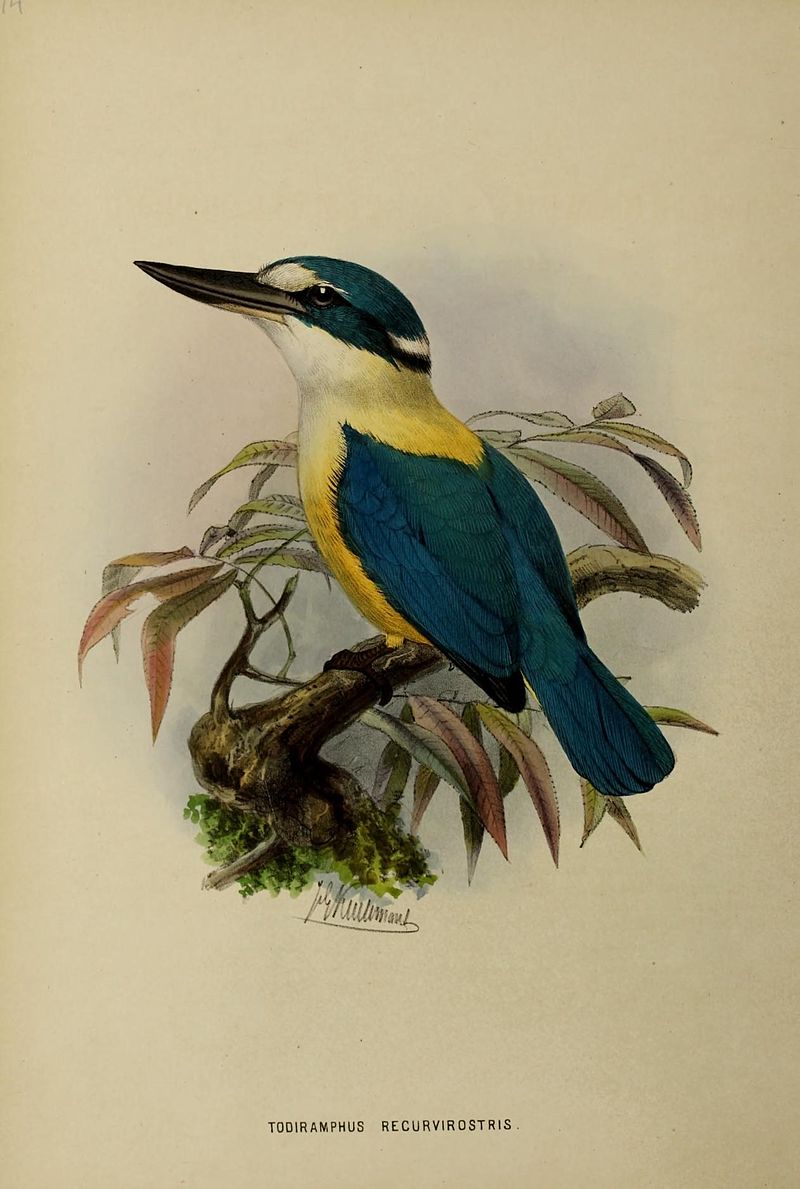
The Flat-billed Kingfisher is a species of bird that belongs to the family Alcedinidae. It is endemic to Samoa and can be found in lowland and coastal areas on Upolu Island as well as Savai’i, but not above 1,200m elevation due to lack of food availability at higher altitudes.
These birds have a characteristic flat bill which aids them in finding their prey – mostly small invertebrates such as insects and crustaceans – by probing into crevices or mud banks for food items.
They are medium sized with vibrant blue plumage on their back, wings and tail feathers; their face, breast and belly are white apart from some tinges of grey around the edges.
The Flat-Billed Kingfisher is an important part of Samoan ecology due its insectivorous diet helping reduce pests like locusts thus protecting crops.Scientific classification:
| Kingdom | Animalia |
| Phylum | Chordata |
| Class | Aves |
| Order | Coraciiformes |
| Family | Alcedinidae |
| Subfamily | Halcyoninae |
| Genus | Todiramphus |
| Species | T. recurvirostris |
15. Samoan White-Eye
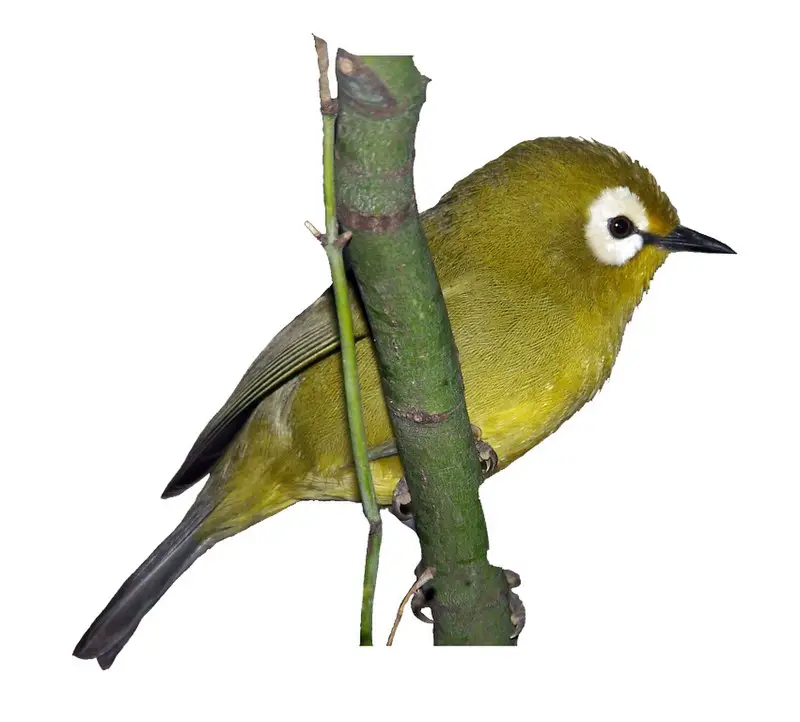
The Samoan white-eye is a small bird native to the island of Savai’i in Samoa. It belongs to the family Zosteropidae and has distinctive white eyes, hence its name.
The species can be found inhabiting subtropical or tropical moist montane forests as well as high-altitude shrubland areas.
Unfortunately, it is now threatened due to habitat loss caused by human activities such as logging and agriculture.
This makes conservation efforts more important than ever if we are to save this unique bird from extinction.Scientific classification:
| Kingdom | Animalia |
| Phylum | Chordata |
| Class | Aves |
| Order | Passeriformes |
| Family | Zosteropidae |
| Genus | Zosterops |
| Species | Z. samoensis |
16. Polynesian Triller
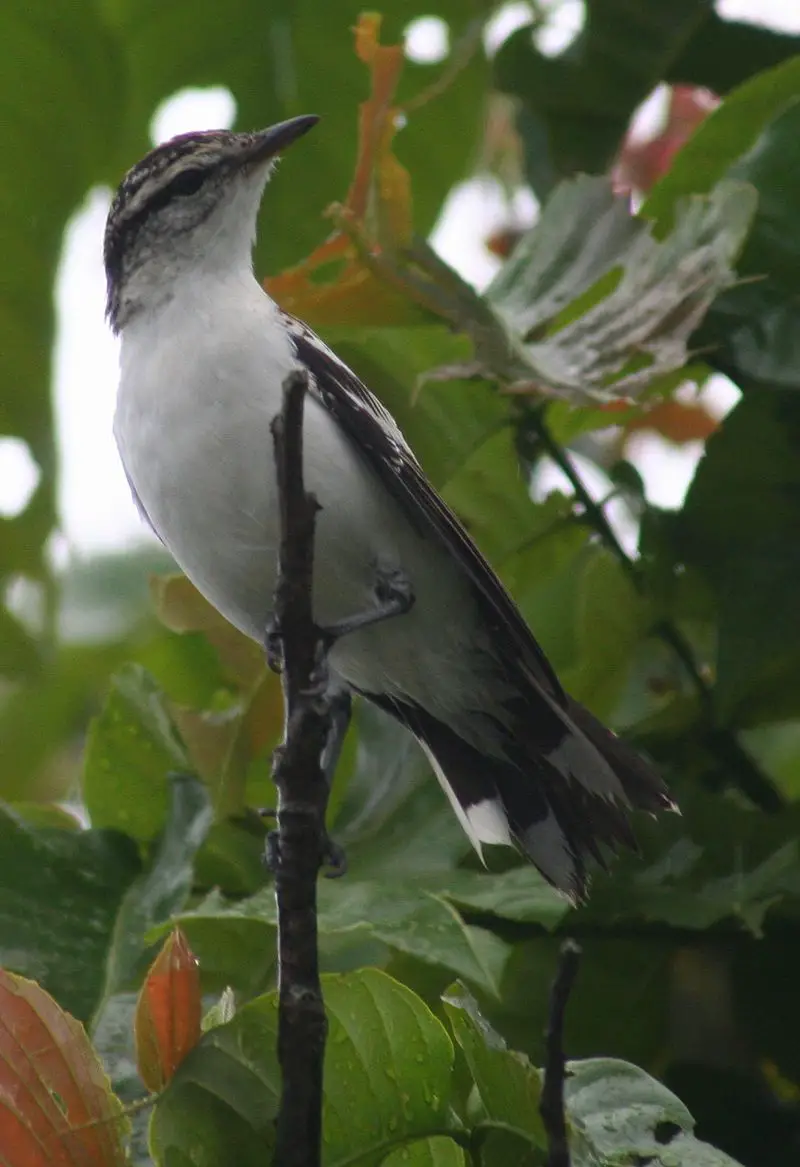
The Polynesian triller is a small passerine bird belonging to the cuckoo-shrike family Campephagidae.
It has numerous subspecies distributed across south-west Pacific islands and can grow up to 15–16 cm in length, with geographically varying plumage ranging from black and white to grey or brown coloration.
This species is known for its loud call which it makes almost constantly throughout the day, making it one of the most conspicuous birds on many tropical islands where it resides.
Its diet consists mainly of insects but will also take fruits when available during times of scarcity.
The Polynesian triller is an important part of island ecosystems as both predator and prey; helping regulate insect populations while providing food for other animals such as snakes and owls.Scientific classification:
| Kingdom | Animalia |
| Phylum | Chordata |
| Class | Aves |
| Order | Passeriformes |
| Family | Campephagidae |
| Genus | Lalage |
| Species | L. maculosa |
17. Pacific Robin
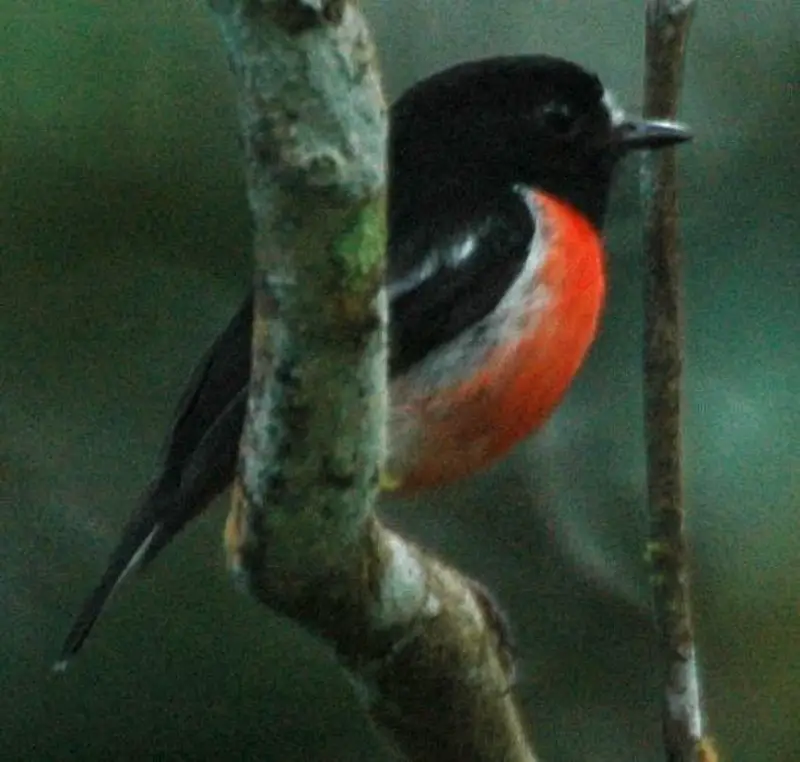
The Pacific robin, a member of the passerine bird genus Petroica, is found in Melanesia and Polynesia. It has distinctive red-breasted plumage similar to that of the scarlet robin found in Australia.
In 1999, taxonomists Schodde and Mason recognised distinctions between these two species leading them to be classified into different genera.
There are currently 13 subspecies of Pacific Robin which display varying colour differences from one another ranging from dull browns through bright oranges and yellows.
The diet mainly consists of insects supplemented by fruit foraging during non breeding seasons as well as occasional visits to garden feeders with suet or mealworms being popular treats on offer.Scientific classification:
| Kingdom | Animalia |
| Phylum | Chordata |
| Class | Aves |
| Order | Passeriformes |
| Family | Petroicidae |
| Genus | Petroica |
| Species | P. pusilla |
18. Spectacled Tern
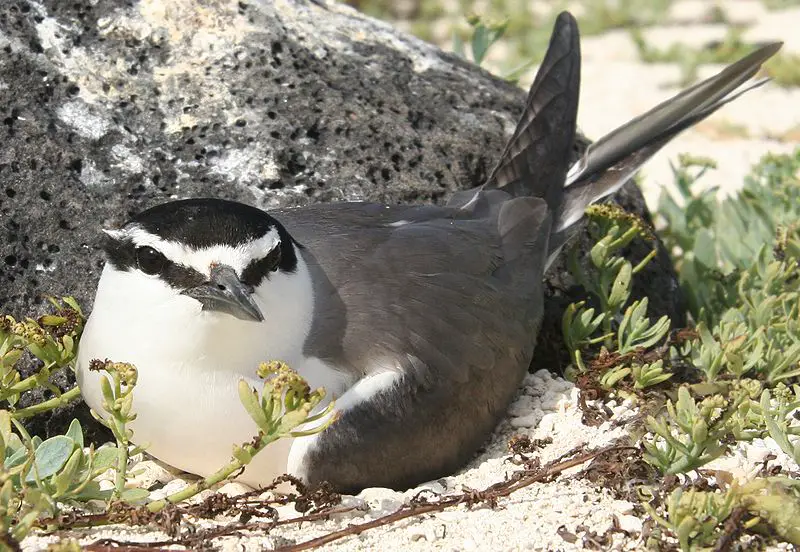
The Spectacled Tern is a beautiful seabird that belongs to the Laridae family. It has distinct grey wings and white head with black markings around its eyes, which give it the appearance of wearing glasses, hence its name.
This species is closely related to Bridled and Sooty terns, but less common than them due to low population numbers.
Recently they were split into their own genus Onychoprion along with Aleutian tern.
They are found in coastal areas such as tropical islands or coral reefs where they breed during summer months before migrating further south for winter season.
These birds feed on small fish by diving from great heights into water bodies like lakes or oceans making them an interesting sight when seen up close.Scientific classification:
| Kingdom | Animalia |
| Phylum | Chordata |
| Class | Aves |
| Order | Charadriiformes |
| Family | Laridae |
| Genus | Onychoprion |
| Species | O. lunatus |
Also Featured In: Easter Island Birds You Should Know,
19. Tongan Ground Dove
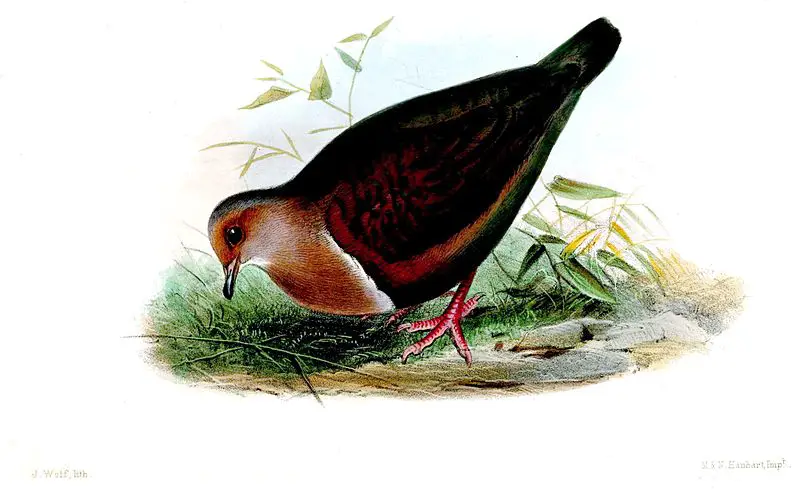
The Tongan ground dove is a species of bird in the Columbidae family, found mainly in American Samoa, Fiji, Samoa, Tonga and Wallis and Futuna Islands.
It has an attractive grey-brown colouring with white patches on its wings and back.
Its natural habitat is subtropical or tropical moist lowland forests but unfortunately due to habitat loss this species is now considered threatened.
This shy yet friendly bird was formerly classified under the genus ‘Alopecoenas Sharpe’ which means it may have been placed into another family at one point before being returned to its rightful place within Columbidae.Scientific classification:
| Kingdom | Animalia |
| Phylum | Chordata |
| Class | Aves |
| Order | Columbiformes |
| Family | Columbidae |
| Genus | Pampusana |
| Species | P. stairi |
20. Crimson-Crowned Fruit Dove
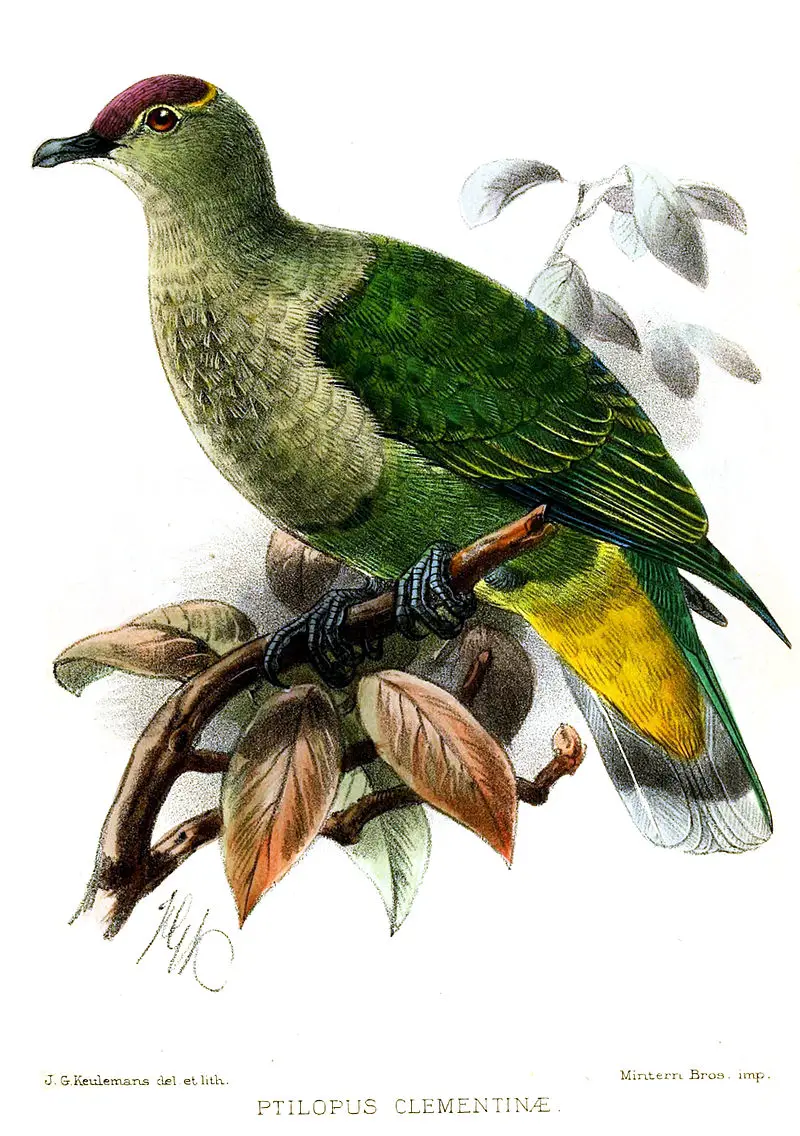
The Crimson-crowned Fruit Dove is a stunning species of bird that belongs to the Columbidae family.
It can be found in several locations throughout American Samoa, Fiji, Marshall Islands, Niue, Samoa Tonga and Wallis & Futuna Islands.
These birds usually inhabit subtropical or tropical moist lowland forests as well as mangrove areas. They are easily identified by their striking plumage – with shades of purple on top of a bright red crown.
Until 2016 both Purple-capped fruit dove and Kosrae fruit dove were considered subspecies but have since been classified as separate species.
This beautiful bird may be small but it certainly has an impressive presence.Scientific classification:
| Kingdom | Animalia |
| Phylum | Chordata |
| Class | Aves |
| Order | Columbiformes |
| Family | Columbidae |
| Genus | Ptilinopus |
| Species | P. porphyraceus |
21. Cardinal Myzomela
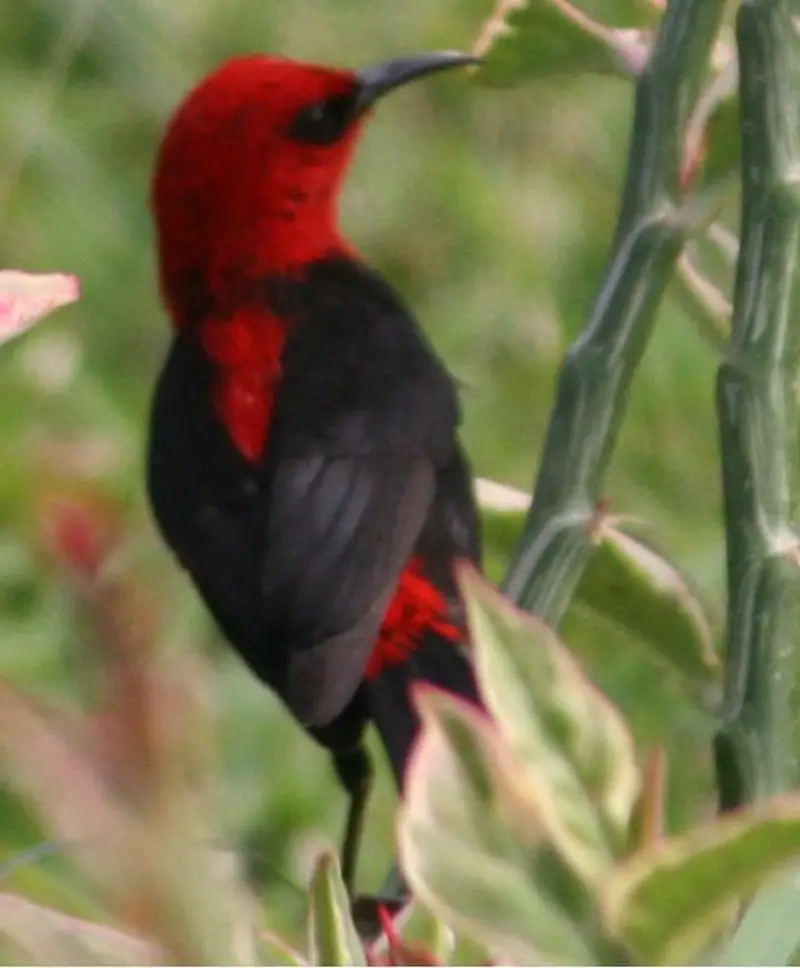
The Cardinal myzomela is a stunning species of bird found in American Samoa, New Caledonia, Samoa, Solomon Islands and Vanuatu.
The male has beautiful scarlet plumage which gave it its name.
It inhabits subtropical or tropical moist lowland forests and mangrove forests. This adaptable species also lives on some Micronesian islands such as Yap.
Its diet consists of nectar from flowers and insects that are caught while foraging among the branches of trees in these habitats.
A shy but energetic bird, the cardinal myzomela often forms flocks with other birds to look for food before returning to roost at nightfall.Scientific classification:
| Kingdom | Animalia |
| Phylum | Chordata |
| Class | Aves |
| Order | Passeriformes |
| Family | Meliphagidae |
| Genus | Myzomela |
| Species | M. cardinalis |
22. Red-Headed Parrotfinch
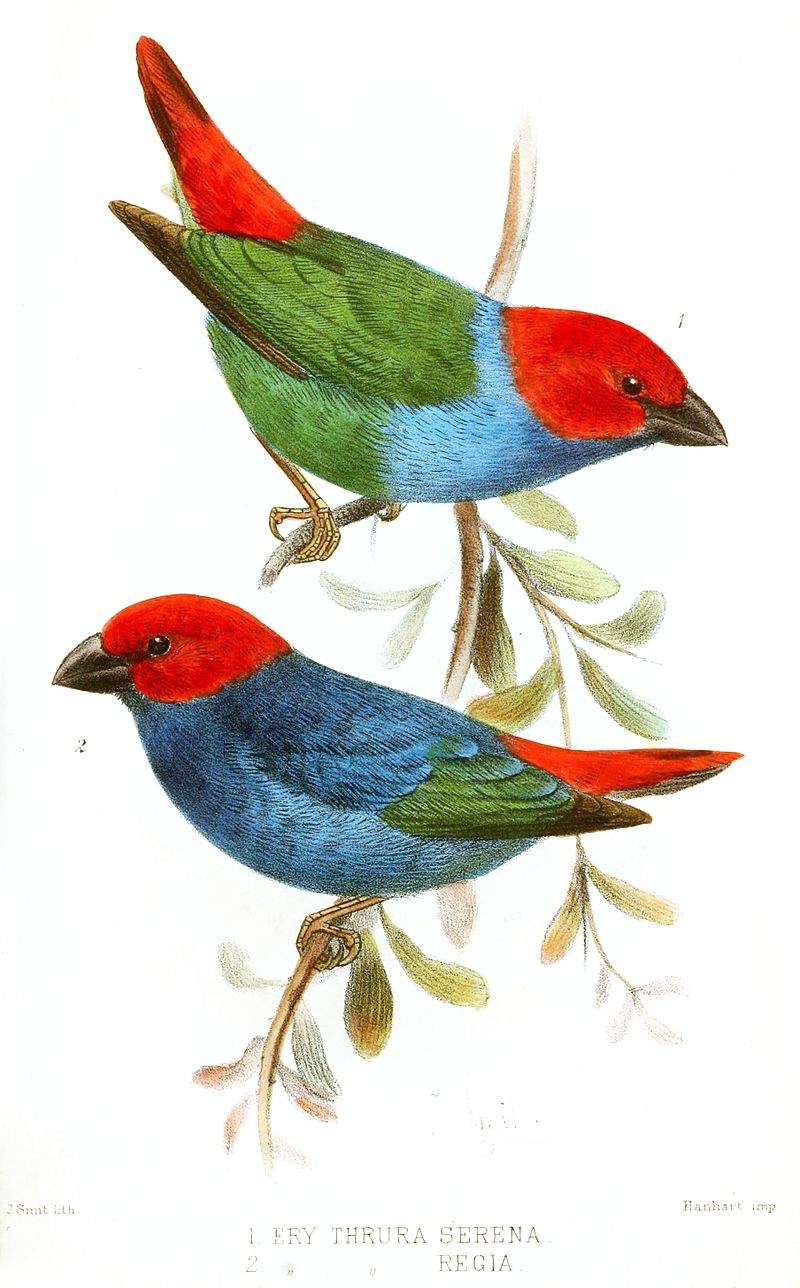
The red-headed parrotfinch is a brightly coloured bird native to the Samoan Islands. The species has an estimated global range of 20,000 to 50,000 km2 and resides in subtropical/tropical lowland moist forests.
They are quite small birds with bright red heads that contrast against their green bodies and blue wings.
With its wide range across Samoa they can be seen all year long flitting between trees in pairs or groups searching for food such as insects, fruit and nectar from flowers.
Red-headed parrotfinches make cheerful chirps while flying around which makes them pleasant company on nature walks through the lush forest habitats they inhabit.Scientific classification:
| Kingdom | Animalia |
| Phylum | Chordata |
| Class | Aves |
| Order | Passeriformes |
| Family | Estrildidae |
| Genus | Erythrura |
| Species | E. cyaneovirens |
23. Collared Petrel
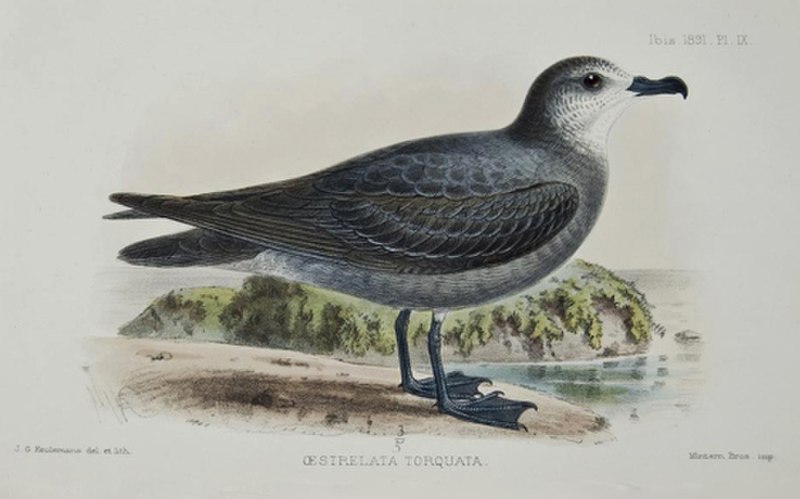
The Collared Petrel is a species of seabird belonging to the Procellariidae family. It can be found in Fiji, where it breeds on Gau Island and possibly other islands, as well as potentially breeding in Vanuatu, Cook Islands and Solomon Islands.
Its plumage predominantly consists of greyish-brown colouring with white underparts and collar around its neck; this gives them their name ‘Collared’ petrels.
They are known to migrate over long distances out at sea during winter months before returning home for the summer season when they breed between August – April.
These birds feed primarily upon squid but also take small fish from surface waters or deeper depths depending on availability/seasonality.
Although not endangered yet conservation efforts need to continue so that these beautiful birds remain protected within our environment.Scientific classification:
| Kingdom | Animalia |
| Phylum | Chordata |
| Class | Aves |
| Order | Procellariiformes |
| Family | Procellariidae |
| Genus | Pterodroma |
| Species | P. brevipes |
24. Samoan Triller
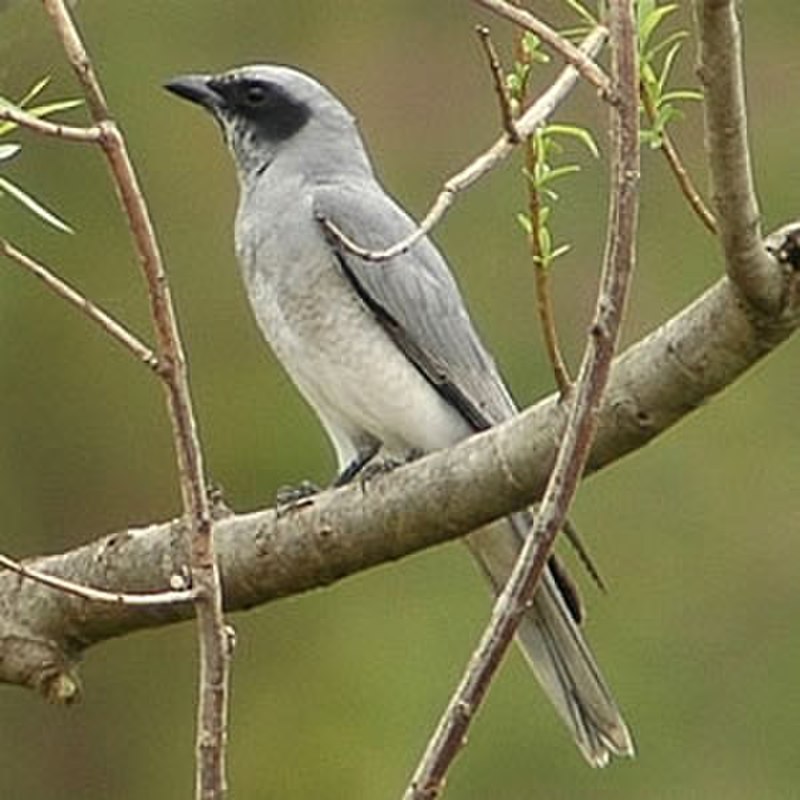
The Samoan triller is a species of bird native to Samoa. It has a length of about 13 cm, making it smaller than its relative the Polynesian triller.
They inhabit subtropical and tropical lowland forests and plantations, but this habitat is now threatened by deforestation.
The miti tae (its local name) lives off small insects found on trees or in leaf litter as well as fruit from plants such as figs.
These birds are solitary except during breeding season when they travel in pairs or small family groups searching for food together. They make loud calls which can be heard up to 2km away.
Conservation efforts must continue if we want these little birds to keep calling through the forests of Samoa for many years to comeScientific classification:
| Kingdom | Animalia |
| Phylum | Chordata |
| Class | Aves |
| Order | Passeriformes |
| Family | Campephagidae |
| Genus | Lalage |
| Species | L. sharpei |
25. Samoan Woodhen
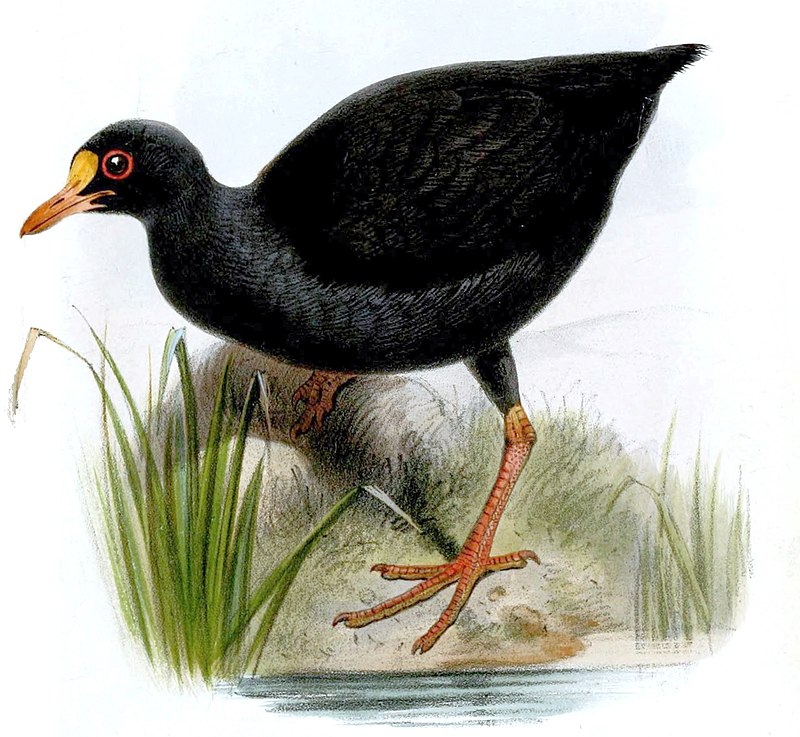
The Samoan woodhen is a nearly flightless bird that is endemic to the island of Savai’i. It has been classified as critically endangered, and may even be extinct due to human activities such as habitat destruction.
This species evolved adaptations for a more terrestrial lifestyle and nocturnal habits which have given it the distinction from other birds in its genus Pareudiastes.
The Samoan woodhen was once abundant on this island but now there are few sightings reported each year making conservation efforts difficult.
In order to protect these unique creatures, local authorities should prioritize their preservation through increased land protection and reduced hunting practices.Scientific classification:
| Kingdom | Animalia |
| Phylum | Chordata |
| Class | Aves |
| Order | Gruiformes |
| Family | Rallidae |
| Genus | Gallinula |
| Species | G. pacifica |
26. Metallic Pigeon
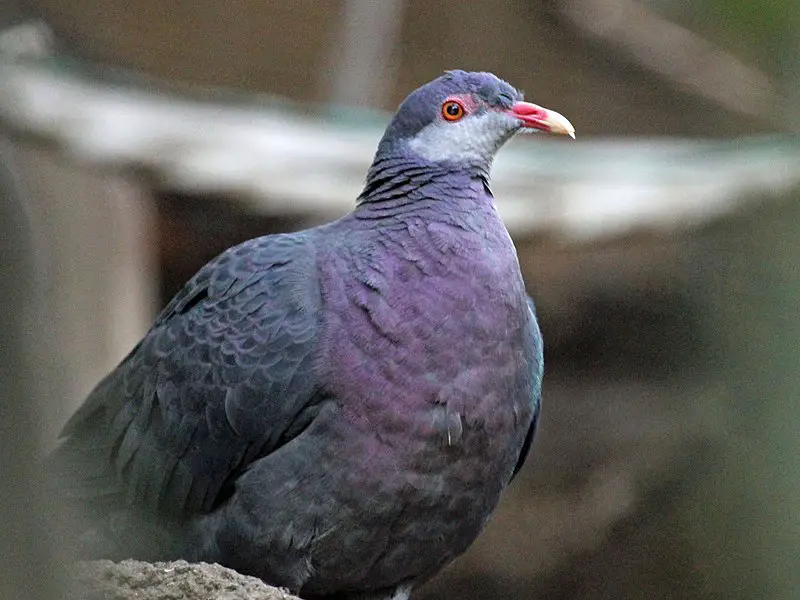
The Metallic Pigeon, or white-throated pigeon, is a medium-sized bird of the family Columbidae. Measuring up to 37 cm in length, it boasts an array of beautiful colors and features.
It has a dazzling iridescent purple and green crown, black wing and uppertail coverts with yellowish red eyes surrounded by red orbital skin around each eye.
Its beak is yellow while its chin and ears are covered with either grey or white feathers.
The underbelly shines brightly in chestnut or glossed purple shades for added beauty when flying about its natural habitat.
Lastly, this spectacular species sports purplish feet which act as perfect complements to their already colorful plumage.Scientific classification:
| Kingdom | Animalia |
| Phylum | Chordata |
| Class | Aves |
| Order | Columbiformes |
| Family | Columbidae |
| Genus | Columba |
| Species | C. vitiensis |
27. Fiji Shrikebill
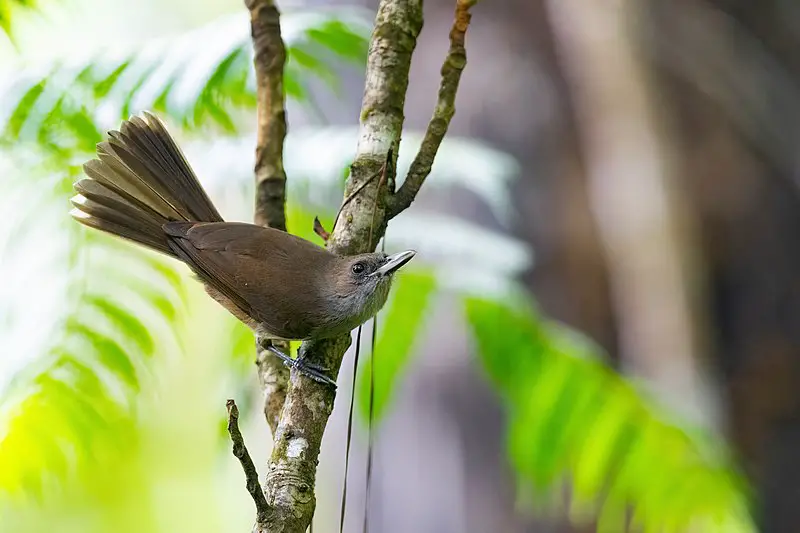
The Fiji Shrikebill is a songbird found in American Samoa, Fiji and Tonga. It inhabits subtropical or tropical moist lowland forests and was originally classified as belonging to the genus Myiolestes.
Twelve subspecies of this bird have been discovered, which are distinguishable by their size and plumage colouration.
The common name for this species comes from its distinctive bill shape -it resembles that of a shrike- along with an alternate moniker; the uniform shrikebill.
This small but beautiful creature has mainly grey feathers on its body while darker shades adorn its wings and tail tip; males also boast faint chestnut markings around their eyes making them easily recognisable amongst other birds in the area.Scientific classification:
| Kingdom | Animalia |
| Phylum | Chordata |
| Class | Aves |
| Order | Passeriformes |
| Family | Monarchidae |
| Genus | Clytorhynchus |
| Species | C. vitiensis |
28. Didunculus
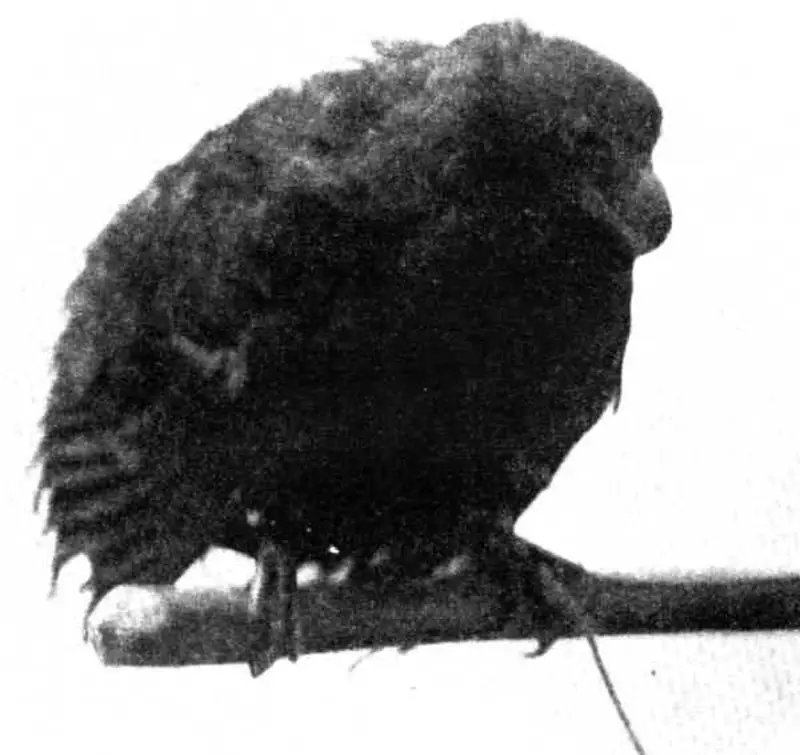
Didunculus, also known as the Tooth-billed pigeon, is a unique species of bird belonging to the Columbidae family. It has no living relatives but it shares genetic similarities with Dodo and other extinct birds.
The most distinct feature that sets Didunculus apart from its peers is its parrotlike bill which gives an impression of relationship between them.
With blue-grey feathers and bright orange beak topped by tooth like projections these medium sized birds have been found in tropical rainforests across Samoa islands only since 1847 when they were first discovered by European biologists during their exploration visits there.
While not much information about this rare breed exists today; scientists believe that Diduncuulus used to inhabit larger regions before human activity caused major population decline for them over centuries.Scientific classification:
| Kingdom | Animalia |
| Phylum | Chordata |
| Class | Aves |
| Order | Columbiformes |
| Family | Columbidae |
| Genus | Didunculus Jardine, 1845[a] |
29. Gymnomyza
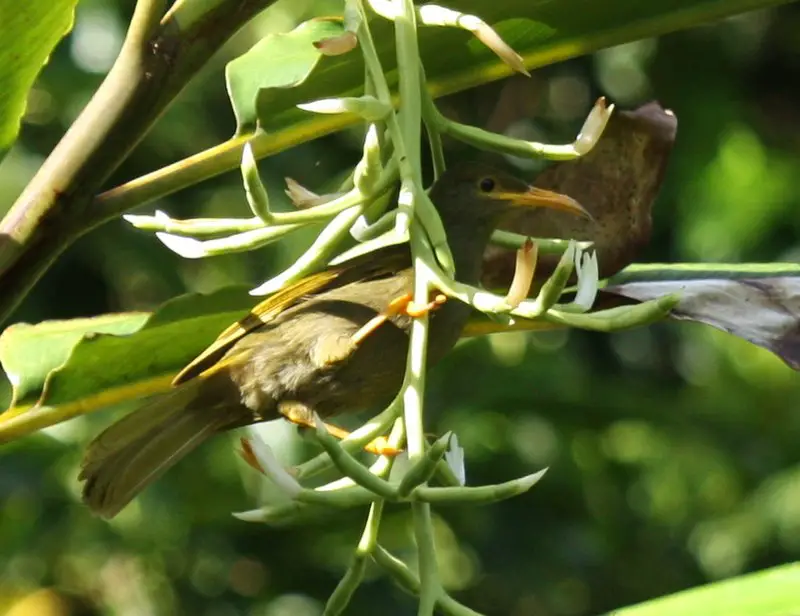
Gymnomyza is a genus of birds belonging to the honeyeater family Meliphagidae. They are only found in a few islands in the southwest Pacific Ocean, with four species currently known.
The smallest species is Gymnomyza samoensis which has an average size of 11 cm long and weighs around 13 grams; while the largest species is G. viridis measuring at up to 17 cm and weighing 40-50g .
These birds have short pointed beaks for nectaring flowers as well as catching insects, and their diet primarily consists of fruits and nectar from flowering plants or shrubs in its native habitat.
All four Gymnomyza bird species display bright colors such as yellow, green or blue on their feathers creating attractive plumage that makes them stand out amongst other avian life forms living in these isolated regions where they evolved over time without human interference.Scientific classification:
| Kingdom | Animalia |
| Phylum | Chordata |
| Class | Aves |
| Order | Passeriformes |
| Family | Meliphagidae |
| Genus | Gymnomyza Reichenow, 1914 |